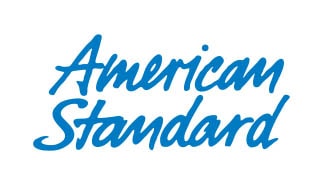Published on
December 15th, 2022The Flow Rate and Pipe Diameter Relationship: How the Width of Pipes Affects Speed of Water Flow and Perceived Pressure
Water pressure is a common problem with many of our New York City clients who manage condominium and co-op properties. Whether your pressure is too high or too low, you’ll benefit from learning more about the flow rate and pipe diameter relationship, which often contributes to water pressure issues. There are other factors that determine water pressure too, and we provide some solutions to common pressure problems for improved occupant satisfaction and protection of your plumbing system.
Does Pipe Diameter Matter?
Pipe width affects water flow
A basic physics equation used in the study of fluid dynamics governs a surprisingly large portion of plumbing. Believe it or not, the fluid continuity equation has been around since the early 18th century, first developed by Swiss mathematician Daniel Bernoulli and refined by his countryman Leonhard Euler. In addition to influencing plumbing and other processes involving water and blood (cardiology), Bernoulli’s principles have been applied to airplane flight too, as air is technically a fluid and responds to the same laws.
What does the continuity equation say?
A1 x V1 = A2 x V2
A1 is the area of a conduit (like a pipe) in one location, and V1 is the velocity of a fluid at that same spot. A2 is the area of the conduit at a different location, and V2 is the velocity of fluid at that second location. The relationship between A1/V1 and A2/V2 has to remain constant. So, if a pipe gets narrower (A, the area, decreases), the velocity of water has to increase to compensate for the change.
You can experience this increase in fluid velocity as a corresponding increase in dynamic pressure. You’ve probably, in fact, experimented unwittingly with this concept some time in your life. If you’ve ever tried to spray something with a garden hose that has no nozzle and put your thumb over the end of the hose to create a nozzle-like effect, you’ve decreased the water conduit area and increased the water’s velocity and pressure.
Of course, the fluid equation applies to a perfect system, with no other factors, like friction, turbulence, gravity, pipe length, etc. But you can use this principle to roughly gauge whether a change in pipe diameter might be to your advantage or not.
For example, if the diameter of a pipe is reduced over a very short distance, you’ll be able to observe the resulting increase in pressure quite noticeably, as in the garden hose scenario above. You may also witness this phenomenon if the pipes leading to a bathtub are very wide until they reach the faucet, where they’re replaced with narrower flexible PEX pipe to squeeze into a small space in the wall behind the valves. The water emanating from the tub spigot may be almost explosive due to the change in conduit diameter.
However, if a change in diameter plays out over a long distance, you may not notice a pressure change. You could even have water reduced to a dribble, especially once you include real-life factors, like water having to fight the force of gravity.
Does Your Property Have Water Pressure Problems?
Low water pressure
Gravity is often the nemesis of tall buildings in New York when it comes to water pressure. The higher water has to travel to reach taps, the more the force of gravity becomes a concern.
If you have low water pressure in your building and it’s more than a few stories high, you can suspect gravity is fighting your water circulator pump. The solution is usually a booster pump, or series of booster pumps, to increase pressure at higher levels.
You can also have low pressure due to other reasons:
- Inadequate circulator pump for the demand placed on it
- Clogged pipes (either a single clog or general narrowing due to a buildup of sediment or mineral scale over the years, particularly in galvanized pipes)
- Poor municipal water pressure where it enters your building
- Improperly adjusted pressure regulator (see more below)
In the case of clogged pipes, they should be checked by a professional plumber. A single clog should be dislodged, and chronically narrow pipes should be replaced. A water filtration system may also be advisable to prevent material from building up inside pipes in the future.
Water pressure too high
High water pressure may seem like a boon, but this can actually damage your plumbing components over time, similar to the way high blood pressure puts undue stress on your circulatory system if you leave it unchecked. It can also result in wasted water if building occupants are getting blasted unnecessarily in the shower, for instance.
The key here is to uncover why pressure is too high. Is it uniformly too strong throughout the entire building? You may need one of three solutions in that case:
- Use of a pressure regulator at the main water valve to control total water pressure (the most common fix)
- Adjustment of circulator pumps
- Adjustment of booster pumps, if you’re using them
If only certain parts of the building or certain rooms are experiencing excessively high water pressure, it’s back to the fluid continuity equation. Do you have piping that suddenly becomes narrow close to a tap or shower head? You may want to change out the terminal end of the pipes to be more consistent overall in diameter.
This should prevent splashing in the sink and overly high pressure that blows out shower handle valve parts and causes dripping (an indicator that a burst pipe is also a possibility if the pressure gets too high). Tightening the local valve can be an option as well, provided that the valve is placed upstream of where your piping narrows.
When installing any new plumbing parts, always try to ensure that you don’t have a sudden dramatic decrease in pipe diameter. Better yet, have experts like Sanitary Plumbing install new pipes. We know the equations to use to keep pressure safe with regard to pipe diameter, distance between connectors, and the like, so your plumbing components will enjoy a long lifespan.
Is your property having problems with water pressure? Call Sanitary Plumbing today at 212-734-5000 to schedule an appointment for a consultation.








